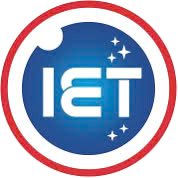Space Technology
Space technology includes technologies used in outer space, such as spacecraft, satellites, space stations, unmanned devices, orbital launch vehicles, deep-space communications, and propulsion systems.
Satellite Technology Development:
- Space Internet: Numerous global projects are opening up possibilities for global satellite internet, particularly in remote areas.
- Earth Observation Satellites: Countries and organizations are investing in satellites to monitor climate change, national security, and space resource exploitation.
Aviation Technology Development: This encompasses the design, production, and operation of civilian and military aircraft. Companies like Boeing and Airbus, as well as national aviation organizations (e.g., FAA, EASA), play significant roles. Additionally, drone manufacturing technology is increasingly advancing with high application potential in national defense and everyday life.
New Material Technology
New material technologies focus on creating and applying advanced materials with superior properties. These materials improve performance and meet diverse needs in industries such as manufacturing, medicine, and construction. New material technologies drive advancements across many fields, opening up unprecedented possibilities for product design and manufacturing, thereby improving quality of life and environmental protection.
Autonomous and Supersonic Flight Technology
Supersonic Flight refers to flying faster than the speed of sound (Mach 1). When the speed exceeds five times the speed of sound (Mach 5), it is referred to as hypersonic flight.
Autonomous Flight refers to aircraft flying under the control of onboard autonomous robotic systems without pilot intervention or remote control. Most modern autonomous aircraft are unmanned aerial vehicles (UAVs) programmed to perform designated tasks. The combination of autonomous flight technology and supersonic flight is a groundbreaking concept in the military field.
